Fruit trees bring beautiful flowers to your garden when in bloom and delicious, fresh produce when fruiting. You may wonder if all fruit trees grow together well. You're on the right page because we've researched which combinations you should avoid for the most productive garden. Here's what we found.
While most fruits can be grown in close proximity, here are some combinations to avoid growing next to each other:
- Apples or apricots with peppers or walnuts
- Blackberries, nectarines, or pears with raspberries
- Blueberries, cherries, corn, grapes, or melons with tomatoes or eggplants
- Peaches with plums or raspberries
In this post, we have a detailed discussion of fruit trees. We will also explore its types, ideal companion plants, typical causes of lack of harvest, and other related questions. So, keep on reading to learn more.
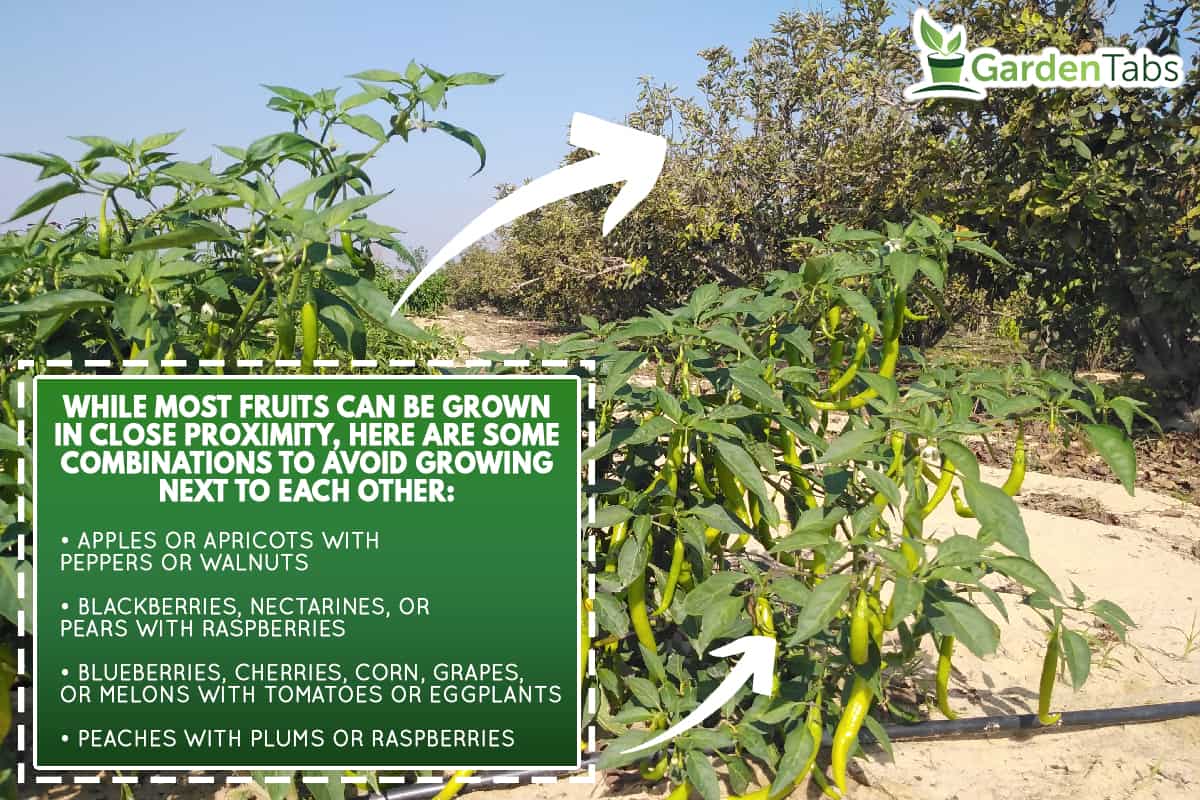
Why Do Some Fruit Trees Dislike Each Other?
Some fruits love to be together, but others are incompatible. They will compete for nutrients because of their allelopathic qualities. In some cases, they may also attract harmful insects.
Moreover, certain fruit shrubs do not want to be with herbs, root crops, and flowers. For these reasons, gardeners recommend a specific radius clearance between competing plants. For instance, the black and red raspberries should be grown at a distance of over 600 feet.
What Are Fruit Trees?

Fruit trees are flowering. They eventually produce ripened ovaries with one or multiple seeds inside. Because they serve as supplementary sources of tasty yet nutritious foods for people and animals, growing fruit trees are sustainable for community development and a balanced ecosystem.
Likewise, some are accessible year-round, while others are seasonal. These plants can offer a bountiful harvest for a long time if you provide them with proper care and nourishment.
Pomology focuses on studying fruit cultivation depending on the structure and form. A huge amount of research is available to understand fruit qualities. Experts classify them into various major types: aggregate, berry, drupe, hesperidium, legume, nuts, and pome, to name a few.
Fruit trees aren't just loved for their fruits, though. These plants are helpful in a variety of ways: ornaments, reforestation, climate change, construction, firewood, medicine, and sunlight shade. If you have a surplus of fruit, you can also sell or dry them.
How To Grow Fruit Trees?
Different fruit trees require different care, but here we have some tips that apply to most of the common varieties:
- Sowing Period: late winter or early spring
- Bearing Age: 2 to 4 years
- Average Lifespan: 15 to 50 years
- Soil Condition: between 6.0 to 7.0; well-drained; clay, sand, or loam
- Light Exposure: full sun
Propagation
If you are a beginner, opt for an easy-to-grow fruit shrub. These include Asian pears, common figs, European plums, and Golden Delicious apples. These versatile trees have qualities that make them good for beginners: low maintenance, disease resistance, pest protection, and flexible needs.
Check the ideal zones on the USDA plant hardiness map to spot if your local climate is conducive to your preferred variety.
Till the soil until it is at least 18 inches deep from the ground, whether you have a graft union or sapling. Then, mix and press the fertilizer and compost into the site before sowing.
Early Care
Perform deep watering (2 feet deep) weekly for better soil moisture. Five gallons of water is a good amount for this frequency. Likewise, weed the area around your trees regularly.
Freezing Temperatures
The harsh cold months can damage some fruit trees. To protect vulnerable trees before winter, harvest and thin the crops in early summer. You should also limit the load of fertilizer and the frequency of watering as you approach frost so the trees start to harden.
Why Do You Need Two Fruit Trees?
Fruit trees can be either self-fertile or self-sterile. Self-fertile trees are able to produce fruits on their own because flowers on the same plant fertilize each other. Self-sterile trees, on the other hand, can't pollinate their own flowers and, hence, need to be grown with another plant of the same species.
Monoecious or self-pollinating trees benefit from insects or wind to carry the grains to the female flower within its part. Dioecious types or cross-pollinators usually require insect pollinators to transfer pollen from male to female plants.
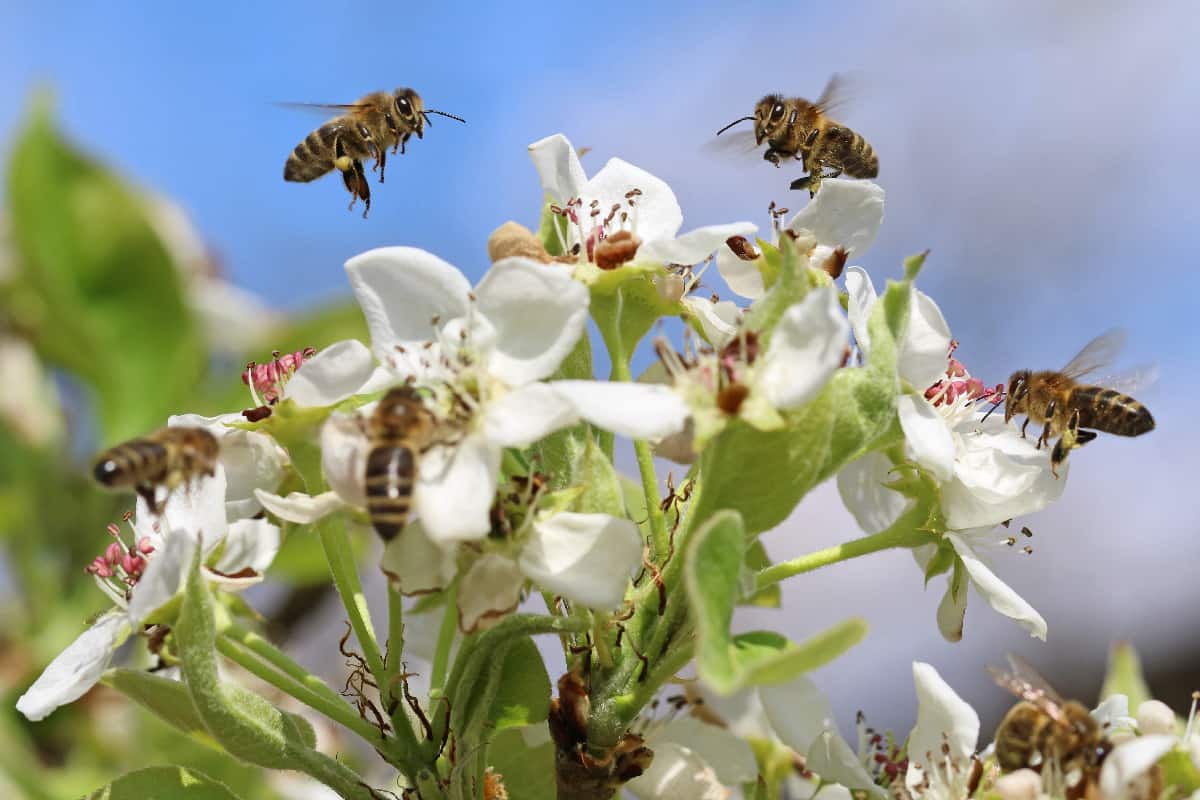
Sometimes, the wind is sufficient to move pollen from stamen to pistil. However, animals that visit the various flowers help a great deal with pollination. Here are some flower-friendly pollinators you may find in your garden:
- Beetles
- Bumble bees
- Butterflies
- Flies
- Honey bees
- Moths
- Wasps
Which Fruit Trees Need You Need To Plant In Pairs?
To have productive fruit trees, raise these plants in pairs of the same or different varieties:
- Apple
- Blueberry
- Muscadine grape
- Pear
- Pecan
- Plum
- Sweet cherry
On the other hand, alternative species are self-fruitful, but cross-pollination will help by supporting their production. Here are some of them:
- Apricot
- Blackberry
- Currant
- Fig
- Gooseberry
- Grape
- Nectarine
- Peach
- Pomegranate
- Raspberry
- Sour cherry
- Strawberry
How Close Can I Plant Fruit Trees to Each Other?
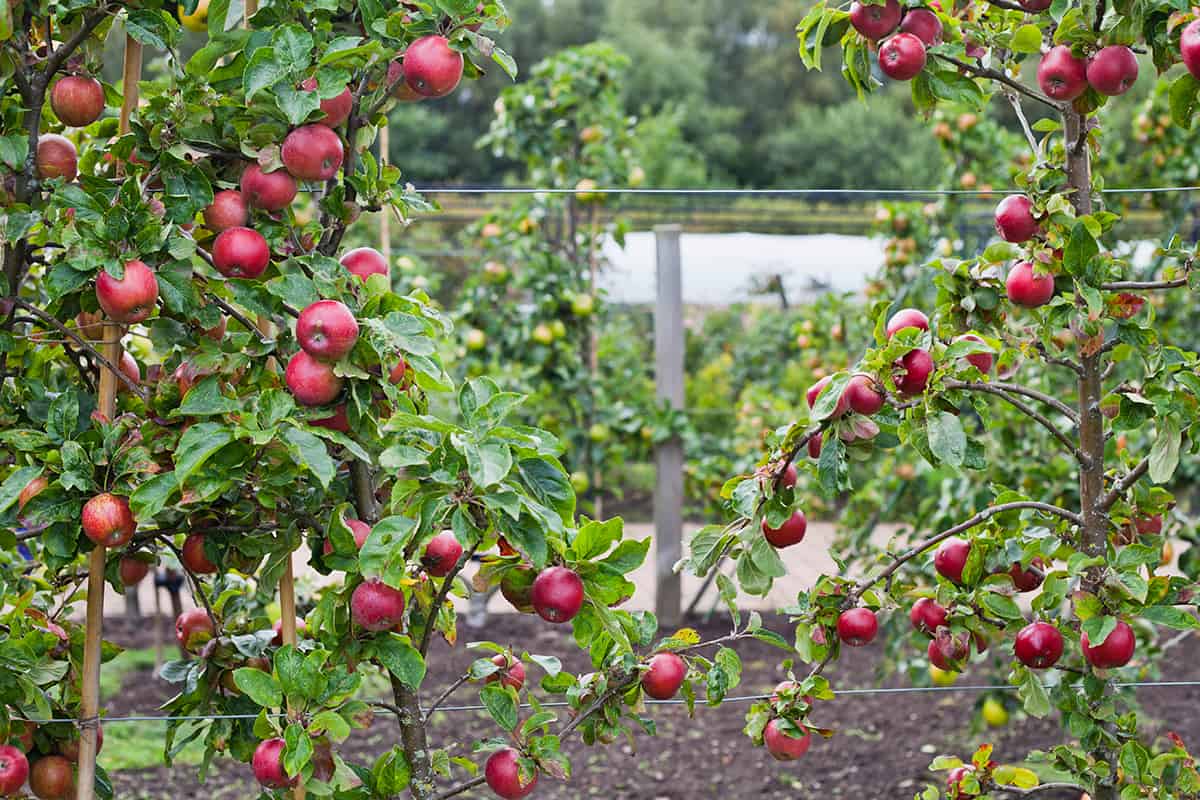
Proximity is essential for fruit trees, especially cross-pollinators. The ideal spacing between the greeneries depends on the species you want. It varies from 6 to 50 feet apart, whereas pears and plums must not be over 100 feet away. Too much distance will lead to poor pollination.
In addition to the distance, pollinators work best when temperatures are more than 65 degrees Fahrenheit.
Do not also use pesticides during the blooming season because they are toxic to bees. Changes in the weather, such as cool rain or winds, can also reduce bee activity.
How Much Space For Dwarf Fruit Trees?
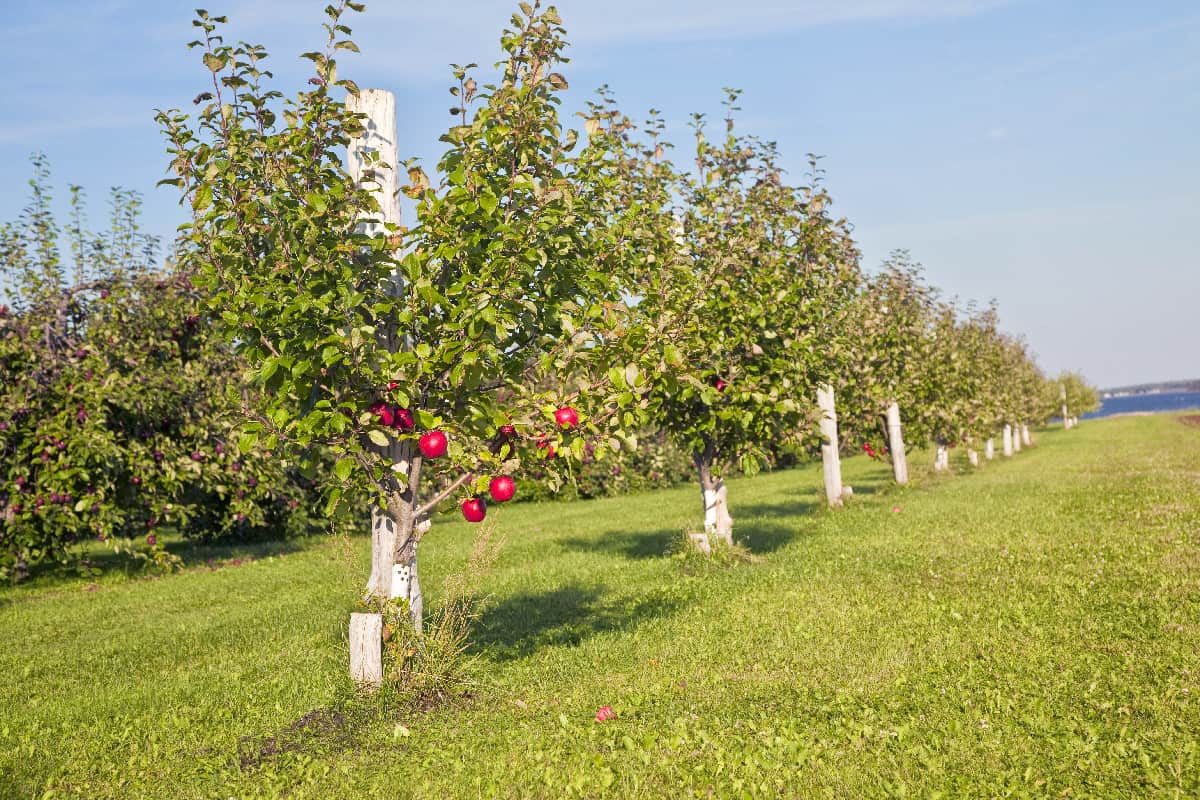
Ideal spacing differs depending on the type of fruit tree and even the specific cultivar you select. Full-size trees require more space than dwarf varieties.
Generally, you must space dwarf fruit trees 1o feet apart. However, a shorter distance is ideal for a colder place (6 to 8 feet). These dimensions guarantee pollination and full-size yield.
Click here to see this dwarf Honeycrisp apple tree on Amazon.
What Is The Difference Between Companion Plants And Grass Around Fruit Trees?
Both companion plants and grass have significant effects on your crop vegetation, either positive or negative.
Companion Plants
Reap the following benefits of surrounding your fruit tree with shrubs and herbs.
- Lessens pest infestation
- Fights weed growth
- Promotes a balanced environment
- Maintains garden soil moisture
- Allows multi-layer raising
Grass
Most fruit trees hate the green pastures. As a result, the unmowed grasses alongside the fruit trees pose risks. They compete with the development of shrubs by absorbing water and nutrients intended for the latter. Turfs attract rodents that love to eat young bark.
Thus, growers apply a rainproof grass killer around the tree ring to prevent these weeds from showing for four months. Moreover, avoid mowing too near the trunk because you will damage it.
Click here to see this bottle of non-residual glyphosate herbicide on Amazon.
What Are The Best Companion Plants For Fruit Trees?
The best companions for your plant differ. If you are in a subtropical region, pair citrus fruits like peach and persimmon trees with these fruits: blackberries and blueberries, chaya, guava, Mimosa, and natal plum.
You can also combine the banana yucca, chuperosa, mesquite, prickly pear, saltbush, turpentine bush, western mugwort, and wolfberry in a surrounding with a temperate climate.
Meanwhile, grow your grapes with blackberries, nectarines, and peaches. Plums want the company of apricots and strawberries.
Companion plants can also be in a container. To gain insight into the suitable fruit trees in this setup, check out this guide: 15 Fruit Trees You Can Grow In Pots at Home.
Can You Plant Flowers Around Fruit Trees?
Aside from integrating fruit trees, you can enhance your landscape by raising flowers of your choice. Popular varieties include bergamot, chives, comfrey, dandelion, and daffodil. They emit fresh aroma and add color to attract pollinators.
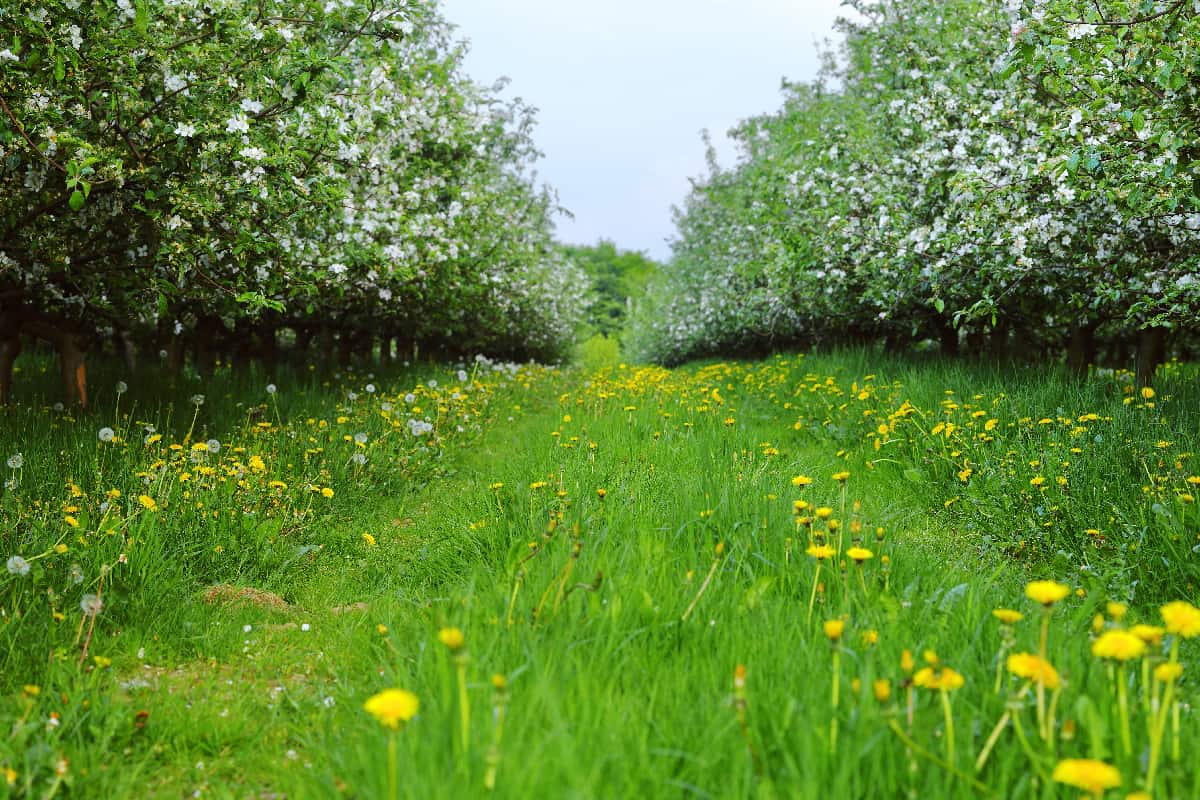
However, remember to watch for aggressive root systems. They can harm your fruit trees and foundation.
Why Is There No Fruit On My Fruit Tree?
If your fruit tree does not bear fruit despite maturity during the crop season, you'll want to get to the root of the problem. Here are common reasons for this issue:
- Contained in a small space
- Excessive application of fertilization
- Pruning too frequently
- Damaged by spring frosts
- Absence of or poor pollination
- Unmet requirement for sun exposure
- Undergoes biennial fruit bearing
To boost the productivity of a fruit tree, consider two or more of these solutions:
- Incorporate screen using a hedge plant, especially before rainy or cold months.
- Protect the flowering from frost with tulle or nylon net at night.
- Avoid spraying pesticides.
- Expose the greenery for a minimum of six hours per day.
- Use slow-release fertilizers instead of insect attractants or quick-release options.
- Remove grass or weed around your tree regularly while the plant is developing.
- Add homemade compost for better soil condition.
- Prioritize the dead, dying, infected, and crossed branches when pruning.
- Cut the half or excess fruitlets to reduce the breakage of sections. ("June or December drop")
Final Thoughts
Not all fruit trees are suitable to grow together. Choosing ideal companion plants promotes a healthy environment for your trees and the rest of your garden.
Thanks for reading! If you enjoyed this post, explore these related articles on fruit-bearing greeneries:
How Much Fertilizer Should You Use For Fruit Trees?



Why can’t you plant peaches beside plums? Every other page said they can be planted next to each other